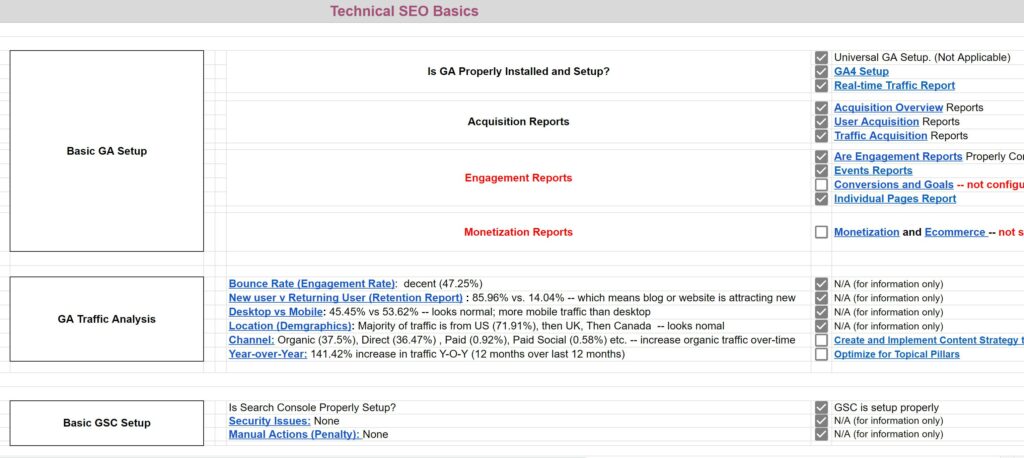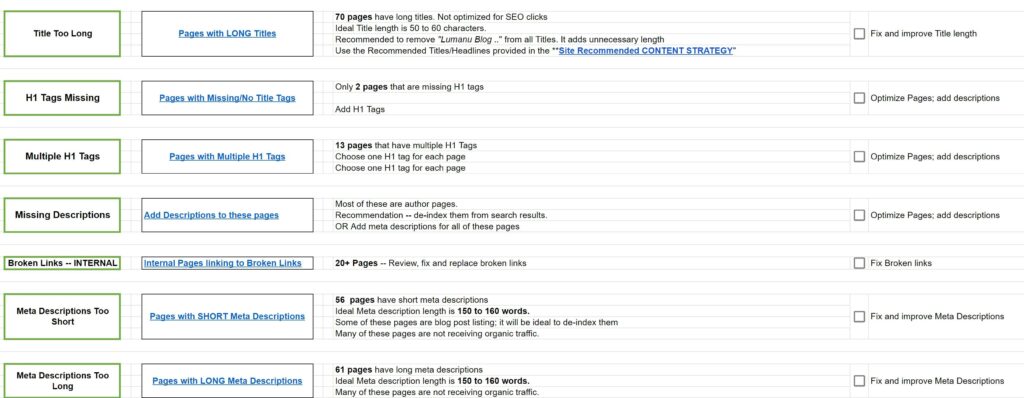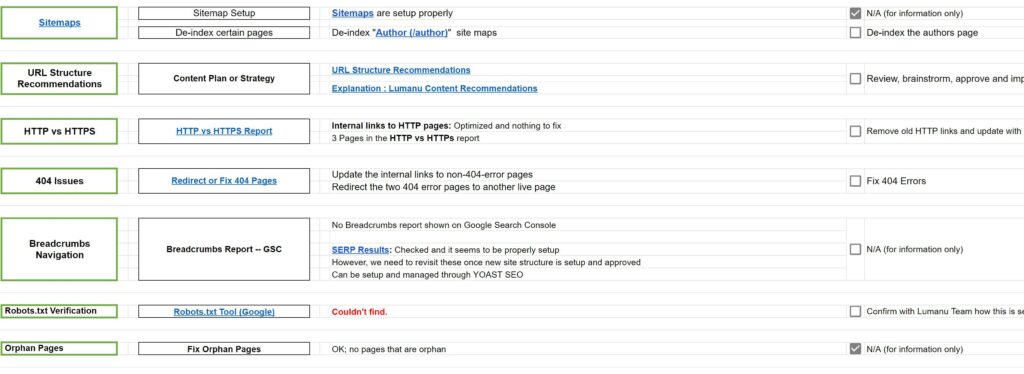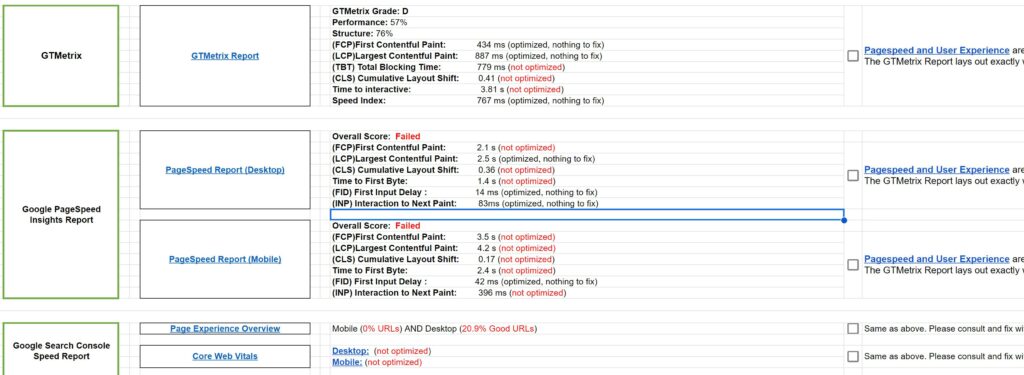Are you looking to boost your website’s search engine visibility and drive organic traffic? Enter the world of technical SEO, a powerful strategy that focuses on optimizing the technical aspects of your website.
By improving factors such as website speed, crawlability, and indexability, technical SEO plays a crucial role in enhancing user experience.
But what exactly is technical SEO? It’s like giving your website a behind-the-scenes makeover to ensure it meets search engine requirements.
In this introductory guide, we’ll explore the ins and outs of technical SEO, from understanding canonical tags to implementing best practices.
Get ready to unlock the secrets that will propel your website toward higher rankings and increased online success.
- What is Technical SEO?
- What is a Technical SEO Audit?
- Fundamentals of Technical SEO
- Importance of Technical SEO and Understanding its Concepts:
- Benefits and Characteristics of a Technically Optimized Website
- Best Practices for Optimizing URLs and Site Structure:
- Enhancing Website Performance with Technical SEO:
- Understanding the Relationship Between Technical SEO, On-Page SEO, and Off-Page SEO:
- Additional FAQs on Technical SEO
- Conclusion: Technical SEO
What is Technical SEO?
Technical SEO refers to optimizing a website for search engines from a technical perspective. It involves changing the website’s structure and code to improve its visibility in search engine results pages (SERPs).
Technical SEO aims to ensure that search engine crawlers can easily access and understand the website’s content, thus improving its chances of ranking higher in search results.
One aspect of technical SEO is website speed optimization. Search engines prioritize websites that load quickly, as slow-loading websites can lead to a poor user experience.
To improve website speed, technical SEO involves minimizing file sizes, optimizing code, and leveraging caching techniques. By making these optimizations, website owners can enhance the user experience and increase the likelihood of higher search engine rankings.
Another important aspect of technical SEO is ensuring proper website indexing. Search engines use crawlers to index websites and understand their content.
Technical SEO involves optimizing the website’s structure and implementing XML sitemaps to help search engine crawlers navigate and index the website effectively. This ensures that all relevant pages and content are discovered and included in search engine results.
Additionally, technical SEO involves optimizing the website for mobile devices. With the increasing use of smartphones and tablets, search engines prioritize mobile-friendly websites in their rankings.
Technical SEO includes:
- Implementing responsive design.
- Optimizing page load times for mobile devices.
- Ensuring the website’s content is easily accessible and readable on smaller screens.
What is a Technical SEO Audit?
A technical SEO audit comprehensively analyzes a website’s technical aspects that affect its search engine optimization (SEO) performance. It involves evaluating various factors impacting a website’s visibility and ranking on search engine results pages.
During a technical SEO audit, an expert examines the website’s structure, coding, and other technical elements to identify any issues hindering its performance in search engine rankings.
This includes assessing the website’s crawlability, indexing, site speed, mobile-friendliness, URL structure, and internal linking.

A technical SEO audit aims to uncover any technical issues that may be preventing a website from achieving its full SEO potential.
By identifying and resolving these issues, website owners can improve their site’s visibility, increase organic traffic, and enhance the overall user experience.
Some common issues that may be identified during a technical SEO audit include broken links, duplicate content, missing meta tags, slow page load times, and improper URL redirects.

These issues can negatively impact a website’s rankings and user experience, making it crucial to address them promptly.
To improve a website’s search engine visibility and rankings, conducting a thorough technical SEO audit is crucial. This will ensure the website is technically sound and meets the requirements.

Regular technical audits allow website owners to stay on top of any issues related to Google, sitemaps, URLs, and robots. This helps them continually improve their website’s performance in organic search.

Fundamentals of Technical SEO
A technical SEO audit is an essential process that helps identify any issues that may be affecting a website’s performance in search results.
Regular technical audits can optimize your website’s search engine, boosting its visibility and overall ranking.
Site Structure
One of the fundamental aspects of technical SEO is analyzing and optimizing your site structure. A well-organized site structure ensures that search engines can easily crawl and index your web pages.
During an audit, pay attention to the following:
- URL Structure: Ensure that your URLs are descriptive, concise, and include relevant keywords. Avoid using dynamic parameters or excessive subfolders in your URLs, as they can create confusion for both users and search engines.
- Navigation: Evaluate the navigation menu on your website to ensure it is user-friendly and intuitive. A clear navigation structure helps visitors find what they’re looking for quickly while also assisting search engines in understanding the hierarchy of your content.
URL Optimization
Optimizing URLs is another critical aspect of technical SEO.
When conducting an audit, consider the following factors:
- Canonicalization: Check if canonical tags are correctly implemented to avoid duplicate content issues. Canonical tags help indicate the preferred version of a webpage when multiple versions exist.
- Redirects: Identify any broken or incorrect redirects on your site. Redirects should be used sparingly, as excessive redirects can slow down page load times and negatively impact user experience.
Mobile-Friendliness
In today’s mobile-dominated world, ensuring that your website is mobile-friendly is paramount.
Google considers mobile-friendliness as a ranking factor, so it’s crucial to assess this aspect during a technical SEO audit:
- Responsive Design: Confirm whether your website is responsive and adapts seamlessly to different screen sizes. A responsive design guarantees a positive user experience regardless of the device being used.
- Page Speed: Evaluate the loading speed of your web pages, especially on mobile devices. Slow-loading pages can lead to higher bounce rates and lower search engine rankings. Optimize images, minify code, and leverage caching techniques to improve page speed.
Importance of Technical SEO and Understanding its Concepts:
Technical SEO is essential to optimizing your website for organic search engine rankings.
By focusing on the technical aspects, you can lay a solid foundation that enables search engines to understand and rank your website accurately.
One crucial concept in technical SEO is XML sitemaps. These sitemaps provide search engines with a roadmap of your website’s structure, making it easier for them to crawl and index your pages.
By including all relevant URLs in the XML sitemap, you ensure that search engines are aware of all the content you want to be indexed. This helps improve the visibility of your website in search results.
Another important element of technical SEO is the proper utilization of robots.txt files. These files serve as instructions for search engine crawlers, telling them which parts of your site they should or should not access. With robots.txt files, you have control over what content gets indexed and how it appears in search results.
Canonical tags are yet another critical component of technical optimization. These tags help address duplicate content issues by specifying the preferred version of a webpage when multiple versions exist.
Using canonical tags effectively ensures that search engines understand which page should be considered authoritative and avoid any potential penalties for duplicate content.
Understanding and implementing these concepts can significantly impact your website’s performance in organic search results. When technical SEO is done right, it enhances user experience by improving site speed, mobile-friendliness, and overall accessibility.
By optimizing technical aspects such as page load times, responsive design, and structured data markup, you create a better user experience for visitors across various devices. This leads to increased engagement metrics like longer time spent on site and lower bounce rates – factors that positively influence your organic rankings.
Moreover, technical SEO allows Google and other search engines to crawl and index your site more efficiently. When Google’s search engine bots encounter well-structured code with clean URLs and optimized metadata, they can navigate your website more easily.
This, in turn, helps search engines understand the relevance and context of your content, leading to higher rankings for relevant search queries.
- Technical SEO is crucial for optimizing your website for organic search engine rankings.
- XML sitemaps provide a roadmap of your website’s structure, making it easier for search engines to crawl and index your pages.
- Robots.txt files give you control over what content gets indexed and how it appears in search results.
- Canonical tags help address duplicate content issues by specifying the preferred version of a webpage.
- Proper implementation of technical SEO can significantly impact your website’s performance in organic search results, especially on Google.
- It enhances user experience by improving site speed, mobile-friendliness, and overall accessibility.
- Optimizing technical aspects such as page load times, responsive design, and structured data markup creates a better user experience.
- Technical SEO allows search engines to crawl and index your site more efficiently.
- Well-structured code with clean URLs and optimized metadata helps search engines understand the relevance and context of your content.
Benefits and Characteristics of a Technically Optimized Website
A technically optimized website offers numerous benefits that enhance its performance and user experience.
By focusing on technical optimization, web pages can load faster, ensuring a seamless browsing experience for visitors. These websites exhibit improved crawlability, making it easier for search engines to discover and index their content.
As a result, they tend to have lower bounce rates as users can effortlessly navigate through well-designed pages.
Faster Loading Time for Enhanced User Experience
One of the key advantages of technical optimization is the ability to significantly improve the loading speed of web pages. Visitors who access a website expect it to load quickly without any delays or buffering.
A technically optimized website ensures that this expectation is met by implementing various measures such as optimizing image sizes, minifying CSS and JavaScript files, and leveraging browser caching.
These optimizations reduce the file size and enable browsers to retrieve data from cache memory instead of requesting it from the server again. Consequently, users can access content swiftly, creating a positive user experience.
Improved Crawlability for Search Engine Discovery
Search engines rely on crawling algorithms to discover new web pages and update their indexes accordingly. A technically optimized website facilitates this process by ensuring easy accessibility and navigation for search engine bots.
Websites become more crawlable by employing clean code structure, proper URL formatting, XML sitemaps, and robot.txt files with clear instructions. It enables search engines to efficiently explore all relevant content within the site while ignoring irrelevant or duplicate pages.
Seamless Navigation Leading to Lower Bounce Rates
When users visit a technically optimized website, they encounter smooth navigation throughout different sections and pages.
Well-designed menus, intuitive user interfaces (UI), and responsive layouts contribute to an enhanced user experience by allowing visitors to find what they are looking for effortlessly.
As a result of seamless navigation experiences provided by technically optimized websites, users are more likely to stay engaged and explore multiple pages, leading to lower bounce rates. This increased user engagement positively impacts the website’s overall search engine rankings.
Best Practices for Optimizing URLs and Site Structure:
Creating clean, descriptive URLs improves user experience and makes it easier for search engines to understand the page content.
One of the key best practices is to create clean and descriptive URLs. This enhances the overall user experience and helps search engines understand your web page content better.
A clean URL is concise, readable, and relevant to the page it represents. Instead of using long strings of numbers or random characters, incorporating keywords that accurately describe the content can greatly benefit both users and search engines.
For example, instead of a URL like “www.example.com/page?id=12345,” a cleaner alternative absolute URL would be “www.example.com/product-name.”
Organizing your site structure logically enhances crawlability and indexing efficiency.
In addition to optimizing individual URLs, logically organizing your website’s overall structure is crucial for effective technical SEO.
A well-structured site enables search engine crawlers to navigate your content more efficiently, improving indexation.
Consider categorizing your web pages into relevant sections or categories to achieve this.
For instance, if you have an e-commerce website selling various products, you could organize them into separate categories, such as electronics, clothing, or accessories. This allows search engines to understand your site’s hierarchy and ensures that each page has its unique place within the structure.
Implementing breadcrumb navigation aids both users and search engines in understanding site hierarchy.

Breadcrumb navigation is a useful feature that displays the path from the homepage to the current page on your website. It typically appears at the top of a webpage as a series of clickable links separated by arrows (e.g., Home > Category > Subcategory > Page).
This navigation aid helps users easily navigate through different levels of your site but also assists search engines in understanding the hierarchical relationship between pages. By implementing breadcrumb navigation, you provide contextual information that enhances both user experience and search engine understanding.
Using internal links strategically improves site structure and SEO.
Internal linking plays a significant role in optimizing your site structure. By strategically placing links within your content, you can guide users and search engines to relevant pages on your website, improving overall accessibility and crawlability.
Consider incorporating internal links within your content to direct users to related articles or product pages. This helps users discover more of your content and establishes a logical connection between different web pages.
Using descriptive anchor text for these internal links further aids search engines in understanding the relevance and context of the linked page.
Incorporating sitemaps ensures comprehensive indexing of your website.
Sitemaps are essential files that provide search engines with a roadmap of all the pages on your website.
There are two types of sitemaps: HTML sitemaps visible to users and XML sitemaps specifically designed for search engine crawlers.
HTML sitemaps are user-friendly outlines that display all your site’s important sections and categories along with their corresponding URLs.
On the other hand, XML sitemaps are machine-readable files created specifically for search engines. They list all the URLs on your site along with additional metadata such as last modified dates and priority levels.

Enhancing Website Performance with Technical SEO:
Optimizing images by compressing them reduces page load times without compromising quality.
Large image files can significantly slow down a website’s performance, leading to higher bounce rates and lower rankings on search engine result pages (SERPs). To address this issue, technical SEO focuses on compressing images to reduce their file size while maintaining visual quality.
One way to achieve this is by using image compression tools like TinyPNG or JPEGmini. These tools automatically optimize images by removing unnecessary metadata and reducing the number of colors in the image palette.
By doing so, the file size is reduced without sacrificing image clarity.
In addition to optimizing images, minifying CSS and JavaScript files also contribute to faster loading speeds.
Minification involves removing unnecessary characters such as white spaces, line breaks, and comments from code files. This process reduces the overall file size, allowing browsers to load these resources more quickly.
Leveraging browser caching is another effective technique for improving website performance. When a user visits a website for the first time, their browser stores certain static elements such as CSS files, JavaScript files, and images locally.
The next time the user visits the same website, these cached resources are loaded from their local storage instead of being downloaded again from the server. This significantly reduces page load times and improves overall user experience.
Implementing Accelerated Mobile Pages (AMP) can also enhance mobile performance. AMP is an open-source framework that allows web pages to load instantly on mobile devices by simplifying HTML markup and limiting the use of external scripts.
By implementing AMP on your website’s mobile versions or specific pages, you can provide a faster browsing experience for mobile users.
To ensure optimal technical SEO implementation, paying attention to meta tags is essential. Meta tags provide information about a web page’s content to search engines and other services that crawl websites.
Important meta tags include:
- Title tags (which define the title displayed on search engine results).
- Description tags (which provide a brief summary of the page’s content).
- Robots meta tags (which instruct search engines on how to crawl and index the page).
Monitoring website performance is crucial for identifying technical SEO issues.
Tools like Google PageSpeed Insights and Google Search Console can provide valuable insights into page load times, mobile-friendliness, and other performance metrics.
Regularly checking these tools helps identify areas that need improvement, such as slow-loading pages or issues with mobile responsiveness.
Understanding the Relationship Between Technical SEO, On-Page SEO, and Off-Page SEO:
Technical SEO focuses on optimizing the technical aspects of a website to improve its search engine visibility. It involves various techniques that ensure search engines can effectively crawl and index your site.
Technical SEO covers factors such as website speed, mobile-friendliness, URL structure, XML sitemaps, canonical tags, and more. By optimizing these technical elements, you enhance your website’s overall performance in search engine rankings.
On-page SEO is concerned with optimizing individual web pages’ content to make them more relevant and valuable for both users and search engines.
This includes keyword research and optimization, creating unique and engaging meta descriptions and title tags, using proper heading tags (H1-H6), structuring content with paragraphs and bullet lists, incorporating relevant internal links within the content, optimizing images with alt text and descriptive file names, and ensuring a good user experience by making the page easy to navigate.
Off-page SEO refers to activities outside your website that influence its ranking in search results. One crucial aspect of off-page SEO is link building.
Building high-quality backlinks from authoritative websites helps establish your site’s credibility and authority in the eyes of search engines.
Other off-page SEO tactics include social media marketing, influencer outreach, guest blogging on reputable sites within your industry niche, and online reputation management through positive reviews and mention on external platforms.
All three aspects – technical SEO, on-page SEO, and off-page SEO – work together synergistically to improve overall organic visibility and drive targeted traffic to your website.
Neglecting any one of these areas can limit the effectiveness of your overall optimization efforts.
When it comes to important pages on your website, such as landing pages or product/service pages:
- Technical SEO ensures that search engines properly index these pages so they can be found easily.
- On-page SEO helps optimize the content on these important pages to target specific keywords and provide valuable information to users.
- Off-page SEO helps build the authority of these pages through backlinks, social signals, and other external factors.
Focusing on all three aspects can create a strong foundation for your website’s search engine optimization strategy.
Technical SEO ensures that your site is technically sound and easily accessible, while on-page SEO optimizes the content to make it relevant and engaging.
Off-page SEO then builds credibility and authority through external signals.
Together, these components contribute to higher search engine rankings and increased organic visibility, ultimately driving targeted traffic to your important pages.
Additional FAQs on Technical SEO
How Long Does It Take to See Results from Technical SEO Optimizations?
The timeline for seeing results from technical SEO optimizations can vary depending on various factors, such as your website’s size, your industry’s competitiveness, and how quickly search engines crawl and index your changes.
However, it is common to start noticing improvements within a few weeks or months after implementing technical SEO optimizations.
Can I Perform a Technical SEO Audit Myself, or Should I Hire an Expert?
Performing a basic technical SEO audit yourself is possible with some knowledge and tools available online.
However, for more complex websites or if you lack expertise in this area, hiring an experienced professional who can conduct a thorough audit and provide tailored recommendations based on your specific needs may be beneficial.
Does Mobile-Friendliness Affect My Website’s Ranking on Desktop Searches?
While mobile-friendliness primarily affects your website’s performance and ranking on mobile searches, it can also indirectly impact desktop rankings.
Search engines consider user experience as a ranking factor. If your website is not mobile-friendly, it may result in a poor user experience on both mobile and desktop devices, potentially affecting your overall search visibility.
How Often Should I Conduct a Technical SEO Audit?
The frequency of conducting a technical SEO audit can vary depending on various factors, such as the size and complexity of your website, the number of changes being made, and the level of competition in your industry.
In general, conducting a technical SEO audit at least once every six to twelve months is recommended to ensure that your website is optimized for search engines and to identify any potential issues that may be affecting your organic search rankings.
Conclusion: Technical SEO
In conclusion, mastering technical SEO is crucial for improving your website’s search rankings and overall performance. By understanding the fundamentals of technical SEO and conducting regular audits, you can identify and address any issues that may be hindering your site’s visibility.
Optimizing URLs and site structure is one of the best practices in technical SEO.
Having a website that is organized and easy to navigate benefits the user and improves search engines’ ability to locate and categorize your content. As a result, your website may appear higher in search results.
A technically optimized website offers numerous benefits. It ensures faster loading times, better mobile-friendliness, and improved accessibility. These characteristics contribute to a positive user experience and align with Google’s E-A-T concept (Expertise, Authoritativeness, Trustworthiness), which plays a significant role in search engine rankings.
Website performance is another key aspect of technical SEO. You can enhance your site’s speed and responsiveness by implementing strategies such as optimizing images, leveraging structured data, and minimizing code bloat. This not only pleases users but also satisfies search engines’ preference for fast-loading websites.
Mobile-friendly design is essential in today’s digital landscape. Considering the increasing number of mobile internet users, ensuring your website is mobile-friendly becomes paramount. Technical SEO considerations like responsive design and mobile optimization can significantly impact your site’s visibility on mobile searches.
Structuring data properly and optimizing images are additional techniques that can boost your site’s SEO performance.
Utilizing structured data markup allows search engines to better understand your content, resulting in rich snippets in search results. Optimizing images by compressing them without compromising quality improves page load times while enhancing user experience.
To achieve improved search rankings consistently, it is vital to have a consistent URL structure across your website. This helps users and search engines navigate your content easily while maintaining a coherent hierarchy within your site architecture.
Understanding the relationship between technical SEO, on-page SEO, and off-page SEO is crucial for comprehensive optimization.
While technical SEO focuses on the backend aspects of your website, on-page and off-page SEO address content relevance, and authority-building, respectively. All three elements work together to enhance your overall search visibility.
Mastering technical SEO is essential for achieving better search rankings and optimizing your website’s performance.
By implementing best practices, such as optimizing URLs and site structure, enhancing website performance, considering mobile-friendliness, and leveraging structured data and image optimization techniques, you can create a technically optimized website that ranks well in search results.
Now that you have gained insights into the importance of technical SEO and its various components, it’s time to take action.
To ensure the optimal performance of your website, it’s important to first conduct a comprehensive technical audit and resolve any potential issues. Additionally, it’s crucial to keep up with the latest SEO trends and adjust your strategies accordingly to stay ahead of the competition.
